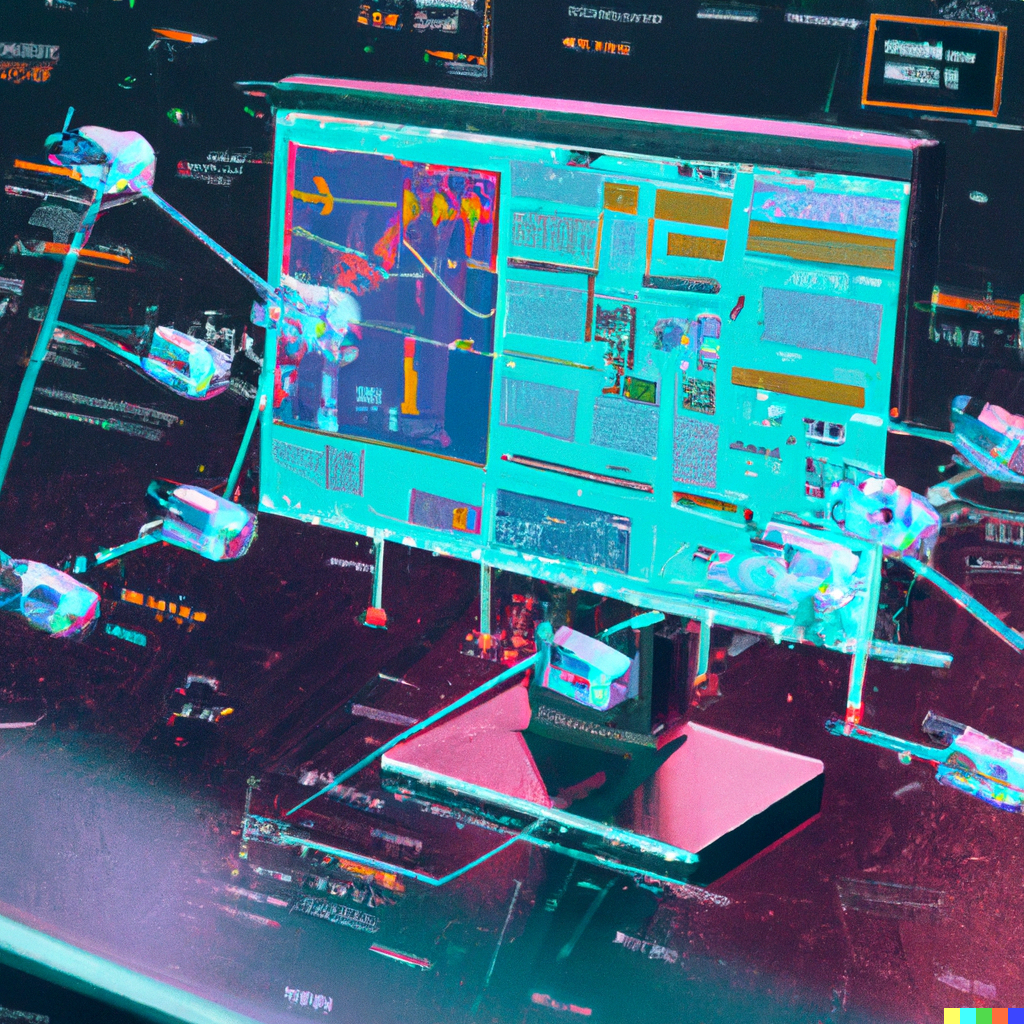Unleash the Power of Rule-Based Systems for Expert Decision-Making
Rule-based systems, often known as expert systems or decision support systems, are cutting-edge computer applications that simulate human experts' decision-making prowess in specialized domains. By harnessing the knowledge of domain experts through a series of encoded rules, these systems can evaluate and make informed decisions in real-time. Industries such as healthcare, finance, and manufacturing turn to rule-based systems to navigate complex, constantly changing data landscapes. In this comprehensive article, we will unveil the inner workings of rule-based systems, distinguish between rule-based systems and machine learning, highlight the benefits of adopting a rule-based approach, and explore potential applications and emerging trends in this innovative technology.
Decoding Rule-Based Systems
Rule-based systems, also known as expert systems or decision support systems, are computer programs created to emulate human experts' decision-making abilities in specific domains. They utilize a set of rules devised by domain experts and encoded into the system, allowing it to assess and make decisions based on these rules.
These systems are often employed to tackle complex issues requiring a high level of expertise or knowledge in a specific field. For example, a rule-based system might be used to diagnose medical conditions, evaluate financial investments, or optimize manufacturing processes.
In a rule-based system, rules are typically represented in a logical format, such as "if-then" statements. For example, a rule might be "if the patient has a fever and a rash, then they may have measles." The system applies these rules by evaluating the available data and determining which rules are applicable. The system then applies the relevant rules and makes a decision based on the resulting output.
Rule-based systems can be used in a variety of applications, including expert systems, decision support systems, and even natural language processing. They are often used in industries such as healthcare, finance, and manufacturing, where decisions need to be made based on complex and constantly changing information. Overall, rule-based systems are a powerful tool for solving complex problems and making decisions based on expert knowledge.
The Inner Workings of Rule-Based Systems
Rule Creation and Storage
A domain expert or a team of experts with in-depth knowledge of the problem domain typically creates rules for a rule-based system. These rules are then encoded into the system in a logical format, such as "if-then" statements.
For example, a medical expert might create a set of rules for diagnosing a particular disease. These rules might include information about the symptoms of the disease, the potential causes, and the most appropriate treatment options. The rules might be encoded into the system as follows:
- Rule 1: If the patient has a fever and a rash, then they may have measles.
- Rule 2: If the patient has a fever and joint pain, then they may have influenza.
- Rule 3: If the patient has a fever and a cough, then they may have pneumonia.
Once the rules have been created and encoded into the system, they are stored in a database or a knowledge base. The knowledge base is a central repository of information that is used by the rule-based system to make decisions.
In addition to storing the rules, the knowledge base may also store other types of information, such as definitions, examples, and explanations of the concepts and terms used in the rules. This additional information can help to improve the explainability and understandability of the system.
Rule Evaluation and Application Process
The process of evaluating and applying rules in a rule-based system involves several steps. First, the system must gather the necessary input data and information that is relevant to the problem at hand. This input data might include measurements, observations, or other types of data that are relevant to the problem domain.
Next, the system uses this input data to evaluate the rules in its knowledge base. This is typically done using a set of algorithms or processes designed to search for and apply the relevant rules.
For example, consider a rule-based system used to diagnose medical conditions. The system might begin by gathering data about the patient's symptoms, such as fever, cough, and rash. It would then search through its knowledge base of rules and apply any rules that are relevant to the patient's symptoms.
For example, the system might apply the following rule: "If the patient has a fever and a rash, then they may have measles." If the system determines that this rule is applicable, it would consider the possibility that the patient has measles and continue to evaluate other relevant rules.
As the system continues to evaluate and apply rules, it may also gather additional data or perform other tasks to gather more information about the problem. For example, the system might recommend that the patient undergo additional testing or consult with a specialist.
Once the system has evaluated all of the relevant rules and gathered all of the necessary information, it will make a decision or provide a recommendation based on the resulting output. This decision or recommendation may be presented to the user in the form of a report, a set of recommendations, or some other form of output.
Overall, the process of evaluating and applying rules in a rule-based system involves a combination of data gathering, rule evaluation, and decision-making. By following this process, the system is able to make informed and expert-level decisions based on a set of pre-determined rules.
Real-Life Examples of Rule-Based Systems
Rule-based systems are used in a variety of industries and applications and can be used to solve a wide range of problems. Here are a few examples of rule-based systems in action:
Medical diagnosis: A rule-based system might be used to assist with the diagnosis of medical conditions. For example, a system might be trained to diagnose diseases based on a set of symptoms and other relevant data. The system might be able to provide a diagnosis or a list of possible diagnoses, along with recommendations for treatment.
Financial analysis: A rule-based system might be used to evaluate financial investments or to provide recommendations for managing financial portfolios. For example, a system might be trained to analyze market trends, evaluate the risks and potential returns of different investments, and provide recommendations based on this analysis.
Manufacturing optimization: A rule-based system might be used to optimize manufacturing processes in order to increase efficiency and reduce costs. For example, a system might be trained to analyze production data and identify bottlenecks or inefficiencies in the manufacturing process. The system might then provide recommendations for improving the process or identifying alternative approaches.
Natural language processing: Rule-based systems can also be used in natural language processing applications, such as language translation or text classification. In these applications, the system might be trained to identify patterns and rules in the text and then apply these rules in order to understand and interpret the meaning of the text.
Comparing Rule-Based Systems and Machine Learning
Rule-based systems and machine learning are two approaches to solving problems and making decisions that are often used in different contexts. Both approaches have their own set of advantages and disadvantages, and the most appropriate approach will depend on the specific problem being solved and the goals of the system.
Rule-based systems are based on a set of pre-determined rules that are created by a domain expert and encoded into the system. These rules are used to evaluate data and make decisions based on the resulting output. Rule-based systems are often used in industries such as healthcare, finance, and manufacturing, where decisions need to be made based on complex and constantly changing information.
Machine learning, on the other hand, is a type of artificial intelligence that involves training a model on a large dataset in order to make predictions or decisions. Machine learning algorithms are able to learn patterns and relationships in the data and use this knowledge to make predictions or decisions. Machine learning is often used in applications such as image and speech recognition, natural language processing, and predictive modeling.
There are several key differences between rule-based systems and machine learning:
- Rule-based systems are based on a set of pre-determined rules, whereas machine learning algorithms are able to learn from data.
- Rule-based systems are typically more transparent and explainable, as the rules that are used to make decisions are explicitly defined. Machine learning algorithms, on the other hand, can be more difficult to interpret and understand, as they are based on patterns and relationships in the data that may not be easily understood by humans.
- Rule-based systems may be less flexible and adaptable than machine learning algorithms, as they are based on a fixed set of rules. Machine learning algorithms, on the other hand, can be re-trained on new data in order to adapt to changing environments.
Overall, both rule-based systems and machine learning have their own set of advantages and disadvantages, and the most appropriate approach will depend on the specific problem being solved and the goals of the system. Both approaches can be powerful tools for solving complex problems and making informed decisions.
Advantages of Rule-Based Systems
Rule-based systems have a number of benefits that make them a useful tool for solving complex problems and making decisions. Some of the main advantages of rule-based systems include the following:
Understandability and Explainability
Rule-based systems are based on a set of explicit rules developed by a subject-matter expert and encoded into the system. These rules are often written in a logical format, such as "if-then" statements, which can make them easier to understand and explain. This explainability can be particularly important in fields like healthcare or finance, where decisions can have far-reaching consequences.
Ability to Handle Complex and Dynamic Environments
Rule-based systems can handle complex and dynamic environments because they can evaluate and apply rules based on the specific data and circumstances at hand. They can be particularly useful in industries like manufacturing or logistics, where decisions need to be made quickly, and the environment is constantly changing.
Potential for High Performance and Accuracy
Due to their foundation in the expert knowledge of a domain expert, rule-based systems have the potential to be highly accurate. In addition, rule-based systems can be designed to optimize specific performance metrics, such as speed or accuracy, making them well-suited for some applications.
Customizability
Rule-based systems can be customized to fit the specific needs of a business or industry. For example, a rule-based system can be tailored to reflect the specific policies and practices of a particular business or to optimize performance for a particular type of problem.
The advantages of rule-based systems make them a powerful tool for solving complex problems and making informed decisions in a variety of different industries and applications. As technology continues to advance, it is likely that rule-based systems will continue to play an important role in the development of intelligent decision support systems and other applications.
Applications and Future Directions of Rule-Based Systems
As technology continues to evolve, rule-based systems are expected to play a significant role in the development of intelligent decision support systems and various applications across different industries. Some potential applications and future directions for rule-based systems include:
Integration with Machine Learning and Artificial Intelligence
Combining rule-based systems with machine learning and artificial intelligence can result in hybrid systems that leverage the strengths of both approaches. Rule-based systems can provide a solid foundation of domain knowledge and explainability, while machine learning algorithms can adapt and learn from new data. This integration can lead to more robust, accurate, and adaptable decision-making systems.
Real-time Decision Making
As data processing and computing power continue to improve, rule-based systems can be deployed in real-time decision-making scenarios. This can be especially valuable in industries such as transportation, logistics, and emergency response, where rapid and accurate decision-making is critical.
Personalized Recommendations and User Experiences
Rule-based systems can be used to create personalized recommendations and user experiences based on individual preferences, behaviors, and needs. For example, in e-commerce and online advertising, rule-based systems can tailor product recommendations and advertisements to individual users, enhancing user engagement and satisfaction.
Advanced Natural Language Processing
Rule-based systems can play a crucial role in the development of advanced natural language processing (NLP) applications, such as sentiment analysis, text summarization, and chatbot interactions. By incorporating linguistic rules and domain knowledge, rule-based systems can contribute to more accurate and contextually relevant NLP applications.
Internet of Things (IoT) and Smart Systems
The increasing proliferation of connected devices and sensors in the Internet of Things (IoT) provides an opportunity for rule-based systems to be integrated into smart systems. Rule-based systems can help process and analyze the vast amounts of data generated by IoT devices, enabling smarter and more efficient decision-making in areas such as energy management, smart cities, and industrial automation.
In conclusion, rule-based systems have demonstrated their value in solving complex problems and making informed decisions across various industries and applications. By leveraging their strengths in explainability, adaptability, and customizability, rule-based systems will continue to play an essential role in the development of intelligent decision support systems and other applications. As technology advances, the integration of rule-based systems with other approaches, such as machine learning and artificial intelligence, will lead to more powerful, accurate, and adaptable decision-making tools that can transform the way we live and work.
Challenges and Limitations of Rule-Based Systems
While rule-based systems offer numerous benefits and have been successfully applied in various domains, they also face some challenges and limitations that should be considered when implementing them:
Knowledge Acquisition and Maintenance
One of the main challenges in developing rule-based systems is acquiring and maintaining the knowledge required to create the rules. This knowledge typically comes from domain experts, and the process of extracting, encoding, and maintaining the rules can be time-consuming and labor-intensive. Additionally, as the domain knowledge evolves or new information becomes available, the rules must be updated, which can be a complex task.
Scalability and Complexity
As the number of rules and the complexity of the problem domain increase, the management of the rule-based system becomes more challenging. The system may become less efficient and more difficult to maintain, leading to a decline in performance. In some cases, the complexity of the rules may cause the system to become too slow or unmanageable for practical use.
Incomplete or Inconsistent Knowledge
Rule-based systems rely on the accuracy and completeness of the rules encoded in the system. If the rules are incomplete, inconsistent, or based on incorrect information, the system's performance and decision-making abilities may be negatively affected. Additionally, rule-based systems may struggle to handle situations where the knowledge is uncertain or ambiguous, leading to less accurate or incomplete decisions.
Rigidity and Adaptability
Rule-based systems are built on a fixed set of rules, which may limit their flexibility and adaptability in rapidly changing environments. While rule-based systems can handle complex and dynamic situations, they may struggle to adapt to new or unforeseen situations that were not anticipated when the rules were created. In contrast, machine learning algorithms can learn from new data and adapt to changing environments more easily.
Despite these challenges and limitations, rule-based systems remain an essential tool for solving complex problems and making informed decisions in various industries and applications. By carefully considering these challenges and working to mitigate their impact, it is possible to develop and implement successful rule-based systems that can deliver valuable insights and solutions. Moreover, the integration of rule-based systems with other approaches, such as machine learning and artificial intelligence, can help to address some of these limitations and create more robust, adaptable, and effective decision-making tools.
Best Practices for Implementing Rule-Based Systems
To overcome the challenges and limitations of rule-based systems and maximize their potential, it's essential to follow best practices when implementing them. Below are some recommendations for developing and maintaining effective rule-based systems:
Collaborate with Domain Experts
Engaging domain experts in the development and maintenance of rule-based systems is critical for ensuring the accuracy and relevance of the rules. Domain experts can provide valuable insights and knowledge that can help create more effective and comprehensive rule sets. Establishing a strong relationship with domain experts and involving them throughout the development process can help ensure the success of the rule-based system.
Prioritize Rule Quality and Simplicity
When creating rules for a rule-based system, prioritize quality and simplicity over quantity. Complex and convoluted rules can make the system difficult to understand, maintain, and update. Focus on developing clear, concise, and easily understood rules that accurately represent the domain knowledge.
Implement a Modular and Hierarchical Design
Designing the rule-based system with a modular and hierarchical structure can help manage complexity and improve scalability. By organizing the rules into modules or sub-systems, the system can be more easily maintained, updated, and expanded. This approach also enables the reuse of rules and modules across different applications, increasing efficiency and reducing development time.
Validate and Test the Rules
It's essential to validate and test the rules in a rule-based system to ensure their accuracy and effectiveness. Regularly reviewing the rules with domain experts and testing the system's performance using real-world data can help identify any issues or inconsistencies. Incorporate feedback from testing and validation into the system's ongoing maintenance and improvement.
Monitor and Update the System
Regularly monitoring and updating the rule-based system is crucial for maintaining its effectiveness and relevance. As domain knowledge evolves or new information becomes available, the rules may need to be updated or revised. Establishing a process for ongoing system maintenance and updates can help ensure the system remains accurate and effective over time.
Integrate with Other Technologies
Combining rule-based systems with other technologies, such as machine learning and artificial intelligence, can enhance their capabilities and address some of their limitations. Integrating rule-based systems with other approaches can lead to more robust, adaptable, and powerful decision-making tools that can better handle complex and dynamic environments.
By following these best practices, organizations can maximize the potential of rule-based systems and develop effective decision support tools that provide valuable insights and solutions. Implementing rule-based systems thoughtfully and strategically can help organizations navigate complex problems, make informed decisions, and drive innovation in various industries and applications.




